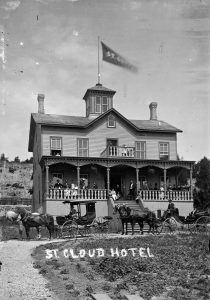

Located just a few doors from Island House hotel, nearly at the corner of Bogan Lane, is St. Cloud Place. Since acquired by the Chippewa Hotel in 1962 it has been used as a dormitory for summer staff. However, for most of the years from the mid-1870s to 1962 it served as both a private home and boarding house. An often overlooked fact of the building’s history is that it is one of two “St. Cloud” buildings to occupy the site.
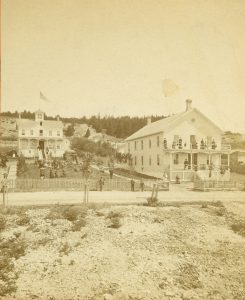

Based on photographic evidence, the St. Cloud was likely built between 1875 and 1878. It was definitely in place by 1879 and operating as the “St. Cloud Hotel.” Advertisements from 1879 the managers as
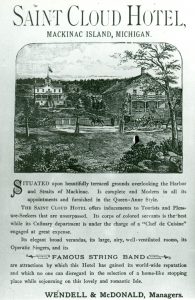

Josiah E. Wendell and James A. McDonald. The former was the son of Abraham Wendell, an early customs official on the island and namesake of the still extant 1840s Wendell house further down Main Street. Little is known of James McDonald, save for that he was a carpenter and married Catharine Earley, member of a prominent pioneer Mackinac family. As Wendell and McDonald are always listed as either managers or proprietors, it is clear that they were not the owners. Prominent ads for the hotel, and even its listing in the Michigan Gazetteer, disappear after 1883. It is likely the owner of St. Cloud ceased using managers around this time.
The earliest tax assessments available are from 1889 and list the owner as Captain John W. Davis (1836-1918). Whether he bought the property in the 1880s, or had owned it all along and simply took over full management at the time is unknown. Davis was a
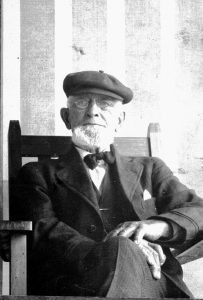

veteran Great Lakes mariner during the days of sail and later a vessel owner and head of a commercial fishing enterprise. In the 1870s he opened a general store, “J. W. Davis and Sons,” on the island. Located between Hoban and Astor Streets, the store’s original building was replaced by the impressive brick Davis Block in 1897, site of today’s Trayser Block.
A fire, likely in 1903, completely destroyed both the St. Cloud and Pine Cottage next door. Both were rebuilt on their original foundations by the following year. Photographs of the St. Cloud confirm this fact. The 1870s building was a vernacular Italianate featuring a bracketed porch and a square-sided cupola. The 1904 building is a refined Colonial Revival structure with three pedimented dormers, the center featuring a Palladian window. Other details include second floor bay windows, fluted corner pilasters and a Doric-columned porch.
Davis apparently used St. Cloud as his residence from at least the late 1880s until his death in 1918. His
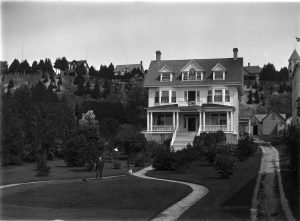

obituary noted that “his home St. Cloud Place is one of the show places on the island.” Newspaper ads from the early twentieth century attest to the fact that he also continued to use it as a boarding house.
Following John’s death in 1918 the property was inherited by his son, Ray C. Davis. Ray continued to use it as a hotel until his death in 1928. Details of ownership of the property for the next 12 years are sketchy and it likely ceased operation during the depression. In 1942 it was purchased by Herb and Helen Pfeiffelman who, like the Davis family, both lived at St. Cloud and rented rooms. The Pfeiffelmans sold it to Nathan Shayne, owner of the Chippewa Hotel, in 1962. Although it was announced at the time of the sale that it was to be used as “an annex for the
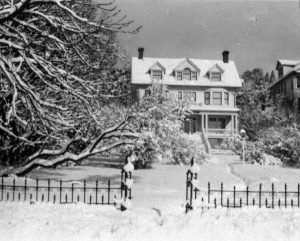

Chippewa,” it was quickly converted to an employee dormitory.








